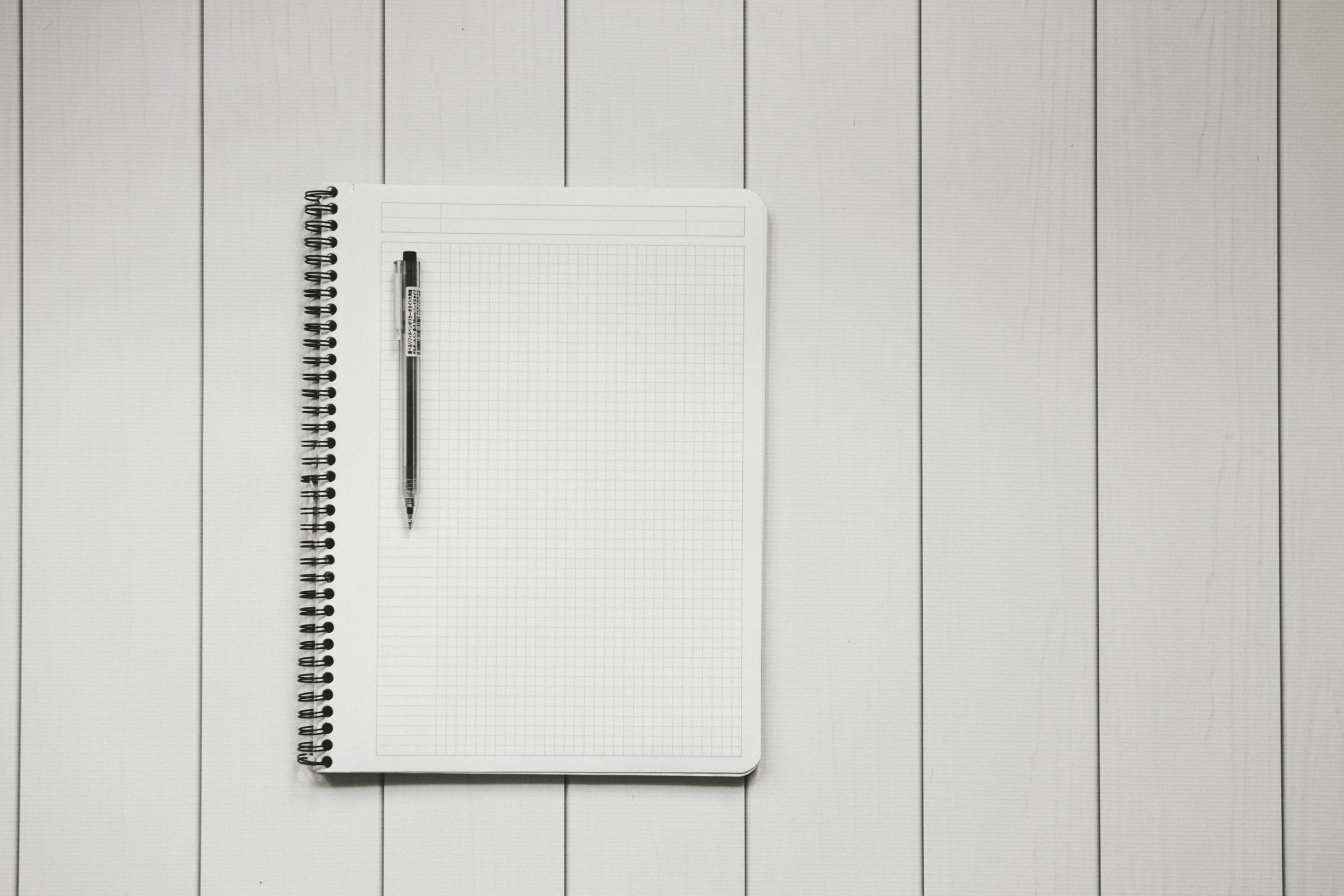The Secret to Writing Faster, More Effective Essays in English
So, you’ve been asked to do something you probably haven’t done in a long time: You have to write an essay for an English course or exam. Or maybe your online English teacher asked you to try writing one. And the only thing you can remember about essay writing from high school and university is that you hated writing them, and you don’t know where to start.
And I completely understand that. I mean, you write essays in high school and university, but once you graduate, none of your bosses and colleagues are asking you to have an essay on their desk every week, right?
When you’re an adult learner, writing can feel like a lost art, and when you have to write an essay for an exam or course, you feel like you have to learn it all over again.
So, you start with an outline, but you’re not sure where to go with your argument. You know what your main topic is, but you’re not sure how to structure your whole essay in a logical, effective way that doesn’t involve a total rewrite.
So how can you write more effective essays in English without having to spend too much extra time? Here’s the secret: It’s all about the thesis statement! Once you’ve written a well-developed thesis statement, you’ve basically outlined the rest of your essay and written most of your introductory paragraph. So a good thesis statement not only helps you write a better essay, but it allows you to write them faster!
So, today we’re going to talk about:
How to write a well-developed thesis statement
How to transform your thesis statement into an awesome introductory paragraph
How to quickly turn your thesis statement into the outline for your essay
So, grab a pen and paper for taking notes, and let’s get started!
Improve Your English Writing Skills
Master the most challenging sentence structures in English: Compound & complex sentences, conditionals, the passive voice, relative clauses and reported speech.
How to Write Faster and More Effective Essays in English
How to write a well-developed thesis statement
You hear the word ‘essay’ all the time, but what is an essay? In general, an essay is usually just a short piece of writing about one particular subject. Unlike a book, a research paper, or a dissertation, an essay usually focuses on one argument.
So that’s why, before you even write an outline, it’s essential to start with a thesis statement - or one or two sentences in your introductory paragraph describing precisely what the essay is going to cover.
So, let’s say that you’re taking an English course, and you have to write an argumentative essay. In an argumentative essay, you have to make a claim and support that claim with evidence.
Let’s imagine, then, that in your English course, you’ve spent the last week or two reading articles about sustainability and climate change. Your teacher tells you to pick a topic relating to sustainability and write a 5-paragraph essay about it.
So, after reading through your articles and notes again, you decide to write an essay about why governments should increase taxes on large textile companies that aren’t attempting to become more sustainable.
The first thing you do, then, is write the topic sentence:
Consumers should avoid buying from large textile companies that aren’t taking measures to become more sustainable.
But that’s not your thesis statement. Your thesis statement should lay out clear reasons for the reader. And each of those reasons will work as the main ideas of each of your body paragraphs.
This is when you’ll go back to your research from class - your articles and notes - to focus on some of the most important reasons why you want to argue in favor of this idea.
You look through your notes and research and narrow your reasons down to three main ideas. It’s best to find three points because these will make up the three body paragraphs of your essay:
Why should consumers avoid buying from textile companies?
To dissuade them from relying on cheap, unethical labor.
To encourage them to reduce their harmful emissions and environmental pollution.
To discourage their continued use of fossil fuels and other non-renewable resources.
So now, you can easily construct your thesis statement in two sentences:
Consumers have an incredible tool of influence with large corporations when it comes to their buying power, and they should consider using this power to make a positive environmental impact and avoid shopping from large textile companies that don’t take measures to become more sustainable. More specifically, they should do this to dissuade them from relying on cheap and unethical labor, to encourage them to reduce their environmental pollution and harmful emissions, and to discourage their continued use of fossil fuels and other non-renewable resources.
WRITING MORE EFFECTIVE ESSAYS IN ENGLISH
How to transform your thesis statement into an awesome introductory paragraph
The introductory sentence
I used to get really intimidated by the idea of writing an introduction when I was a university student. The idea of capturing your reader’s attention puts a lot of pressure on you, doesn’t it?
You don’t know the reader! How will you know what gets their attention?
Here’s what I suggest, then: Put yourself in the reader’s position, and imagine what would capture your attention.
Because if you’re writing an essay about sustainability and climate change, for example, you want them to keep reading.
So, it’s best to avoid writing an introductory sentence that’s too obvious:
Climate change is one of the most significant issues facing the world today.
It’s true, of course, and everyone knows that, but your reader wants to learn something new.
Climate change is one of the most significant issues facing the world today, but what many retail shoppers and consumers may not realize is how much their favorite clothing brands currently contribute to the problem.
Not only does it grab the reader’s attention and tell them something new, it immediately sets the stage for the issue you will focus on in the paper: how taxing textile companies can help solve the problem.
Practice exercise
Read each of the introductory statements below. What can you add to make these introductory statements stronger? Be sure to write your answer in the comments!
The internet has had a big impact on businesses today.
There were not many famous female painters before the twentieth century.
Most people agree that having access to education is extremely important.
The language of computers has changed in the last few decades.
Movies have an important place in modern culture.
Give background information in the form of details from your research
After you write your introductory sentence or couple of sentences, you can provide the reader with some background information in the form of evidence. This compels the reader not only to keep reading but to trust that you based your ideas on research and that you will continue to use research to support the rest of the arguments in your essay.
Recent studies have shown…
Researchers have found…
In a preliminary study…
In a recent study…
A recent poll indicated that ___% of consumers/shoppers/voters/drivers…
The _____ Organization has predicted that _______ will_______ by the year 2022…
Write two or three transitional sentences to set up the first part of your thesis statement
After you write a sentence or two to cite your research, you should include one or more transitional ideas that will set up the first part of your thesis statement, which in this example is:
Consumers can create change with their buying power.
So, before your thesis statement, you might write something like:
Climate change is one of the most significant issues facing the world today. Still, many retail shoppers and consumers may not realize just how much their favorite clothing brands currently contribute to the problem. A recent McKinsey study revealed that only 1% of the world’s apparel was made sustainably, with most of the world’s biggest textile brands still relying on unethical labor and fossil fuels in factories that produce toxic emissions. This small fraction of the world’s leading clothing brands has only implemented sustainability measures due to more demand from millennial and Gen Z shoppers. It’s clear, then, that consumers can create change with their buying power.
Now that you’ve set up the first part of your thesis statement, your introductory paragraph is basically done, and it’s time to start outlining your essay.
How to quickly turn your thesis statement into the outline for your essay
Now that you have your thesis statement writing the rest of your essay will be much easier because you’ve narrowed down exactly what you’re going to write about in the following body paragraphs. And from this point, you can use your thesis statement as the backbone of your outline.
If you’re not sure how to structure each body paragraph in your outline, make sure that each body paragraph includes five main points. This doesn’t mean that it can only have five sentences, but each body paragraph should have at least five distinct ideas that flow together logically:
OUTLINEIntroductory Paragraph
Introductory Sentence
Background information
Thesis Statement:
Consumers have an incredible tool of influence over large corporations when it comes to their buying power, and they should consider using this power to make a positive environmental impact and avoid shopping from large textile companies that don’t take measures to become more sustainable. More specifically, they should do this to dissuade them from relying on cheap, unethical labor, to encourage them to reduce their environmental pollution and harmful emissions, and to discourage their continued use of fossil fuels and other non-renewable resources.
Body Paragraph 1
Dissuade them from relying on cheap, unethical labor.
Statistic - how many textile companies rely on cheap labor?
How not shopping from them could reduce this problem.
Paraphrase or quote from research to support your idea.
Concluding idea.
Body Paragraph 2
Encourage them to reduce emissions and pollution.
Statistic or quote - How much pollution are textile companies responsible for?
How not shopping from them could reduce this problem.
Quote or paraphrase to support your idea.
Concluding idea.
Body Paragraph 3
Discourage them from using fossil fuels and non-renewable resources.
Statistic or quote - How much do textile companies rely on fossil fuels, etc.?
How not shopping from them could reduce this problem.
Quote or paraphrase to support your idea.
Concluding idea.
Concluding Paragraph
Did you see how easy it was to create an outline for the paper once I spent extra time working on my thesis statement?
And at this point, you have almost all of the essential elements you need to write your entire essay!
Of course, once you start filling out your body paragraphs, you’ll need to make sure they don’t appear as stiff or as repetitive as they do in the outline. The reader will get bored if your writing is too formulaic. You'll want to vary your sentence length and use plenty of transitional expressions to make sure your ideas flow.
But when you start with your thesis statement and your outline, you don’t have to spend extra time rewriting your essay because the overall structure doesn’t make sense.
What about the concluding paragraph?
Your teacher or a quick Google search might have told you, “Restate your main ideas in the concluding paragraph.” And while that’s partly true, it doesn’t make a lot of sense, does it?
I mean, what’s the point of a concluding paragraph that just repeats the introduction
The concluding paragraph actually re-emphasizes your main points from your introduction and briefly discusses how you supported them in your body paragraphs. Basically, it serves as a way to show the reader how you proved your main ideas and show them what you covered in the body of the paper. So, the structure of your concluding paragraph might look like this:
Concluding paragraph
Re-state your main idea in a different way.
Discuss your first main point and how you proved it or expanded on it in the body paragraph.
Discuss your second main point and how you proved it or expanded on it in the body paragraph.
Discuss your third main point and how you proved it or expanded on it in the body paragraph.
A concluding idea or a related thought for the reader to reflect on.
Editing your essay
If you use this strategy to write essays in the future, your essays will be more logical, and they’ll do what you intended them to do, which makes them effective for your reader.
But that doesn’t mean they’ll be perfect when you’re finished, of course!
If you have time, consider leaving your essay for a day before coming back to it. You’ll be more objective if you take some time away from it.
When you read your first draft, go through your main points one more time, and make sure that you’ve solved any problems you wanted to solve in your thesis statement. When you read each sentence, ask yourself:
What purpose does this serve?
Does it need to be here?
Does it solve a problem or answer a question?
Does it allow my writing to flow and connect logically?
Then reread it for structure and style:
Do I use different sentence lengths and styles?
Did I use different transitional expressions?
Did I repeat too many of the same expressions or ideas?
Read it once more out loud to test it for flow and to catch any significant errors. And if you have a peer editor or friend who’s willing to help you out, send your essay to them, too! It’s so important to get a perspective from another set of eyes!
But keep in mind: It will never be perfect! It’s all about progress, not perfection, and while it’s great to give writing your best effort, you’ll also learn so much from your errors. Mistakes are great teachers, too.
How can I practice essay writing on my own?
I’m so glad you asked! And wow, you’re dedicated. Look at you!
If you want to practice writing on your own, and you’re looking for free resources to guide or inspire you, you should definitely check out our lesson plans on sentence structure. They’ll help you master the most challenging sentence structures in English and improve your writing in English.
Our students love them, and we think you will, too!
About the writer
Marta is an online ESL teacher who works with students from around the world. As a writer, language nerd, and content contributor for In English With Love, her mission is to empower English learners with knowledge and positivity.
















